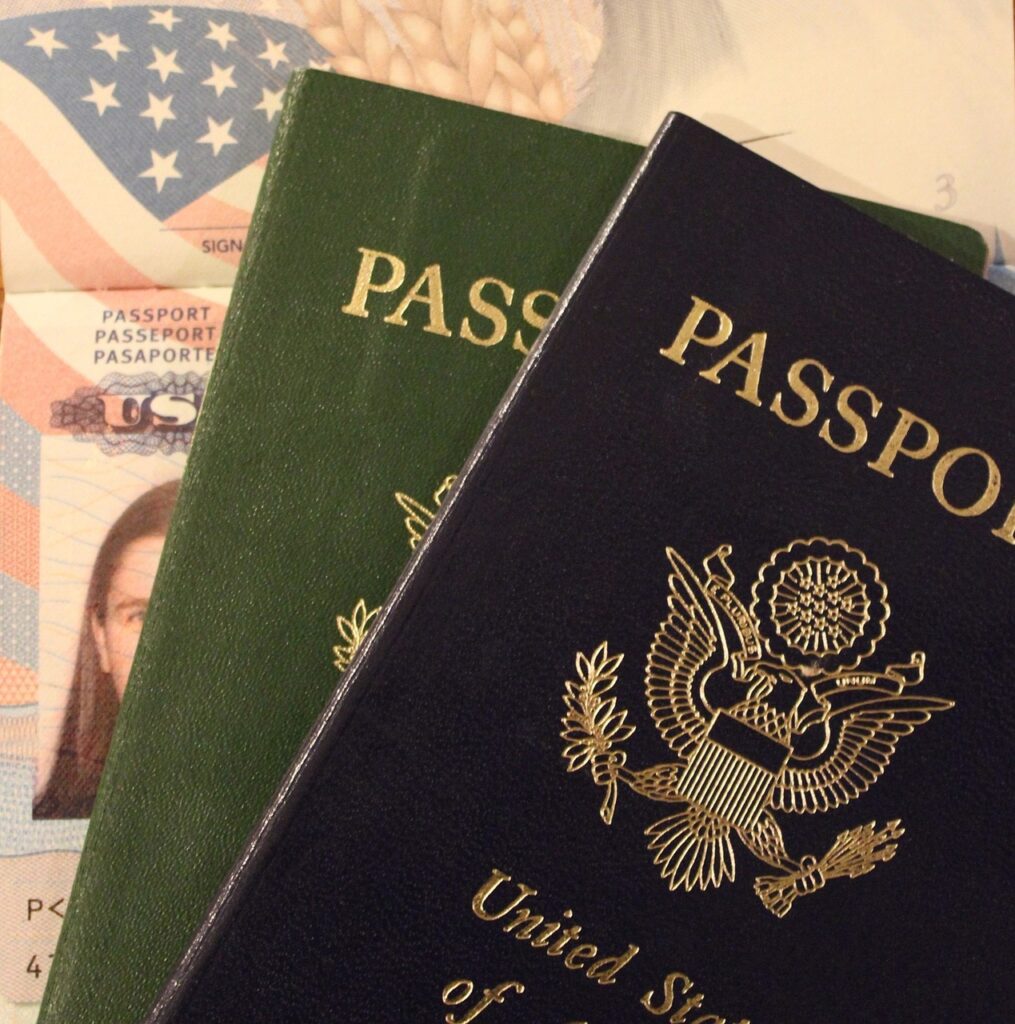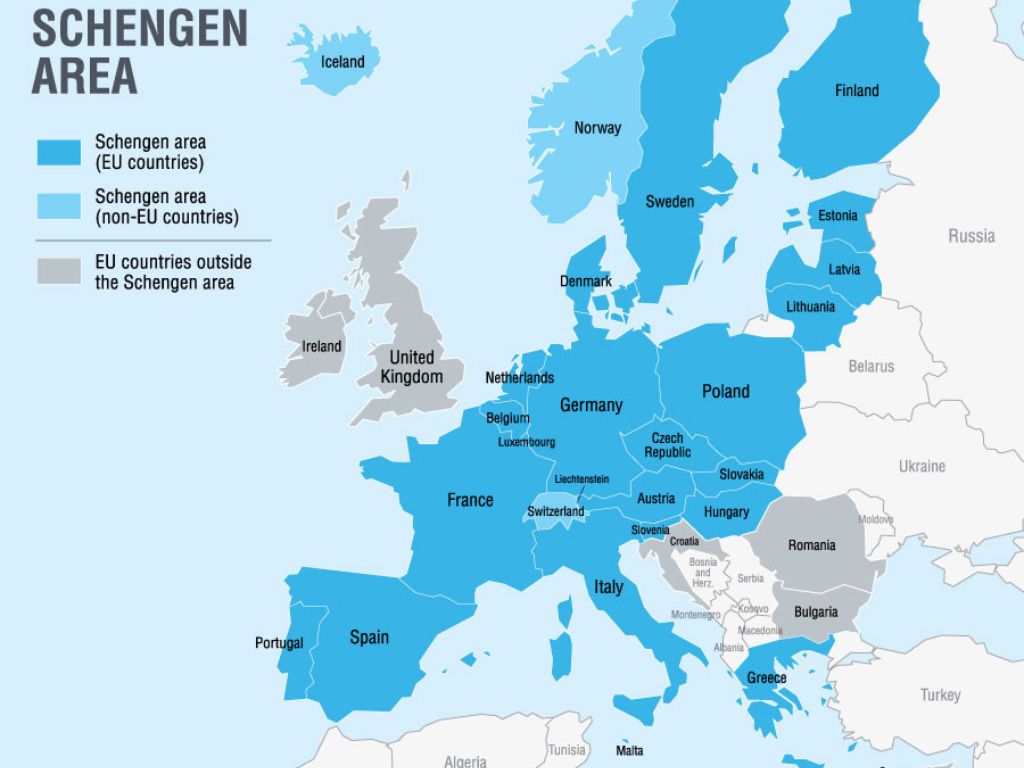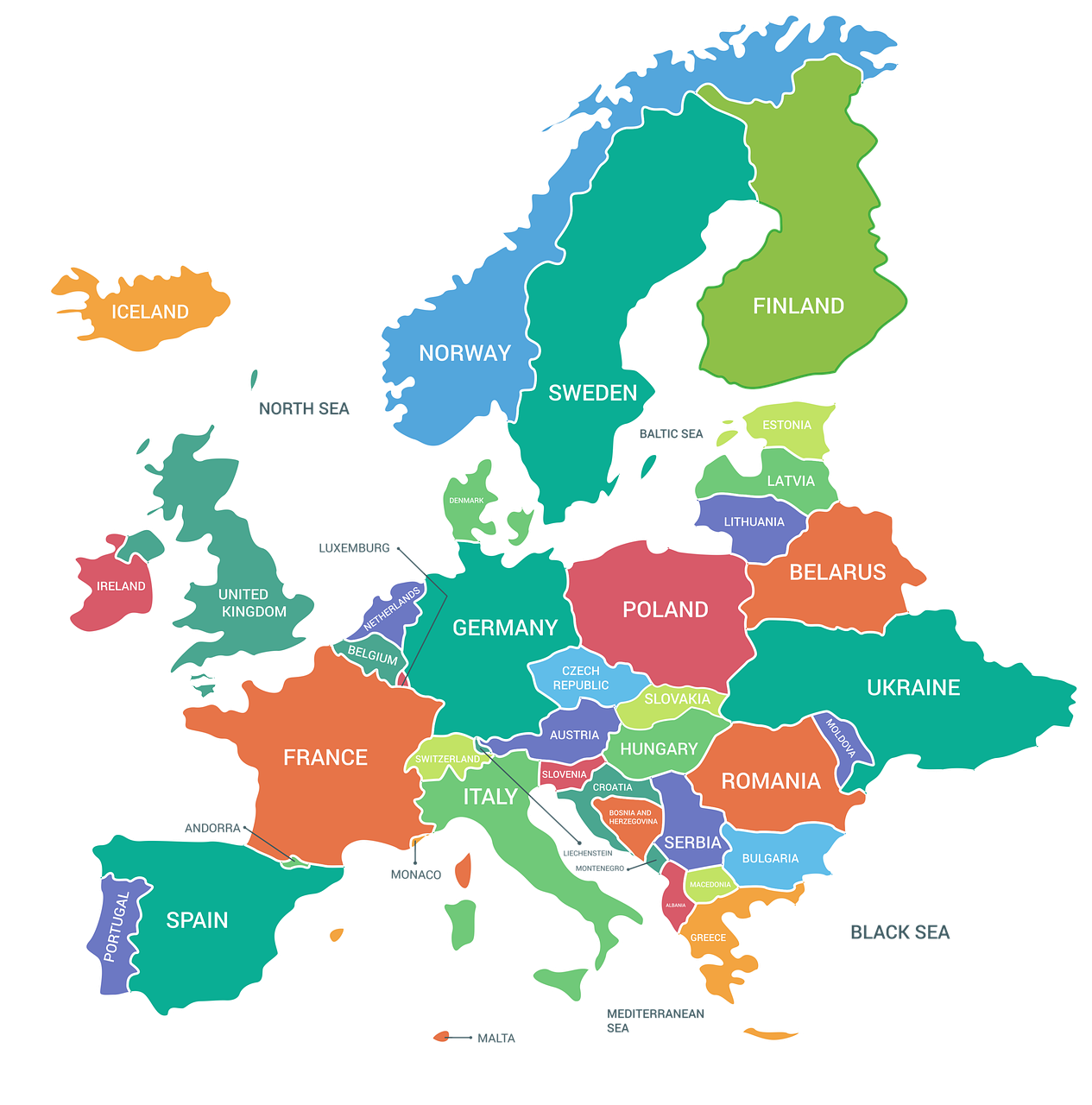Traveling to Europe to Play Soccer with a Schengen Visa

Table of Contents
Understanding the Schengen Agreement
The Schengen Agreement establishes a passport-free zone across most European countries, enabling free movement. With the Schengen Agreement in place, female soccer players have easier access to European travel.
Schengen Visa Requirements
To enter the Schengen Area, female soccer players must meet specific travel document and entry requirements.
Travel Documents and Entry Requirements
Female soccer players must possess a valid passport issued within the past 10 years, with a validity of at least three months beyond the departure date. Additionally, certain documents may be requested upon entry to the Schengen Area.
Required Documents at the Port of Entry
Border officials may require additional documents such as proof of sufficient funds, accommodation details, round-trip tickets, and travel insurance. It is crucial to obtain an entry stamp on the passport to avoid potential penalties.
Importance of Entry Stamp
The entry stamp serves as proof of legal entry into the Schengen Area and should be obtained to avoid fines or detention.
Types of Schengen Visas
Female soccer players can apply for different types of Schengen visas based on the purpose of their visit.
Purpose of Visit
Visas can be obtained for various reasons, including business, visiting friends and family, tourism, cultural events, official visits, medical reasons, and short-term study. The type of visa issued determines the duration of stay in the Schengen Area.
Single-entry, Double-entry, and Multiple-entry Visas
The consulate may issue single-entry, double-entry, or multiple-entry visas based on the frequency and duration of visits. The maximum stay allowed in the Schengen Area must be considered.
Duration of Stay with a Schengen Visa
The maximum duration of stay with a Schengen visa is usually 90 days within a 180-day period. Female soccer players must plan their trips accordingly to comply with this limit.
Applying for a Schengen Visa
Female soccer players need to follow specific application procedures to obtain a Schengen visa.
Determining the Need for a Visa
Female soccer players must assess whether they require a visa based on their travel purpose and nationality. Planning the travel itinerary is a crucial step in the visa application process.
Organizing Travel Plans
Female soccer players should determine the duration of their stay, countries to be visited, and the entry and exit points.
Schengen Visa Costs
There is a standard visa fee for most applicants, but some categories may have reduced or waived fees. It’s important to be aware of the applicable visa costs based on individual circumstances.
Flight Itinerary for Visa Application
A confirmed flight itinerary is necessary for the visa application process. Female soccer players should understand the purpose and requirements of a flight itinerary.
Travel Insurance for Schengen Visa
Travel insurance is a mandatory requirement for female soccer players traveling to the Schengen Area.
Coverage Requirements
Travel insurance must provide a minimum coverage of 30,000 EUR for medical emergencies throughout the stay. Female soccer players should be aware of where and how to purchase travel insurance.
Purchasing Travel Insurance
Insurance can be purchased online or through conventional methods from reputable companies such as Europ Assistance or MondialCare.
Proof of Accommodation for Visa Application
Women soccer players must provide confirmed accommodation details for the entire duration of their stay. Preparing and presenting this proof is essential for a successful visa application.
Schengen Area – The World’s Largest Visa Free Zone
Schengen Area signifies a zone where 27 European countries abolished their internal borders, for the free and unrestricted movement of people, in harmony with common rules for controlling external borders and fighting criminality by strengthening the common judicial system and police cooperation.
Schengen Area covers most of the EU countries, except Ireland, and the countries soon to be part of the Schengen Area: Romania, Bulgaria, and Cyprus. Although not members of the EU, countries like Norway, Iceland, Switzerland, and Lichtenstein are also part of the Schengen zone.

Schengen Area Countries
Currently, the Schengen Area consists of 27 member countries. All of these countries are located in Europe, from which:
- 23 members fully implement the Schengen acquis,
- Four of them – members of the EFTA, implement Schengen acquis through specific agreements related to the Schengen agreement.
- Iceland, Norway, Switzerland, and Lichtenstein are associate members of the Schengen Area but are not members of the EU. They are part of the EFTA and implement the Schengen acquis through specific agreements related to the Schengen agreement.
- Monaco, San Marino, and Vatican City have opened their borders but are not members of the visa-free zone.
- The Azores, Madeira, and the Canary Islands are special members of the EU and part of the Schengen Zone, even though they are located outside the European continent.
- There are four more EU members that have not joined the Schengen zone: Ireland – which still maintains opt-outs, and Romania, Bulgaria, and Cyprus – who are seeking to join soon.
The external borders of the Schengen Zone stretch for a distance of 50,000 km, with 80% being water and the remaining 20% being land. This area includes hundreds of airports and maritime ports, numerous land crossing points, an area of 4,368,693 km2, and a population of 423,264,262 citizens.

Information for Schengen Countries
Austria
One of the wealthiest countries in the world by per capita GDP terms, Austria has an area of 83,871 km2 and is inhabited by 8,712,137 residents. The country signed the Schengen agreement on April 28, 1995. However, it started its implementation two years later, on December 1, 1997.
Austria is located in central Europe, bordered by eight countries, more than most European countries. Its capital, Vienna, remains one of the top European destinations for travelers.
Requirements to apply for a visa to Austria
Belgium
Belgium is one of the five first countries that signed the Schengen agreement on June 14, 1985, and started its implementation on March 26, 1995. It is a small and densely populated country, with an area of 30,528 km2 and a number of 11,358,379 residents.
The country borders France, the Netherlands, Germany, and Luxembourg in Western Europe. Its capital, Brussels, is the European Union’s administrative center, often called the EU’s capital city.
Requirements to apply for a visa to Belgium
Czech Republic
Shortly known as Czechia, the country was founded as late as 1993, with the peaceful dissolution of Czechoslovakia. The central European country has an area of 78,866 km2, bordered by Germany to the west, Austria to the south, Slovakia to the east, and Poland to the northeast.
Its population is 10,610,947, 64.3% of which are Czechs, while the rest are Slovaks, Moravians, Ukrainians, and others. The country has a considerable income from tourism, with Prague as the fifth most visited city in the old continent.
The Czech Republic signed the Schengen agreement on April 16, 2003, and started its implementation years later, on December 21, 2007.
Requirements to apply for a visa to the Czech Republic
Croatia
Croatia is the latest EU country to join the Schengen Area. It became an official member on January 1, 2023.
Croatia is located in Central and Southeast Europe. It has a total area of 56,594 km2 and a population of 4,076,246. It borders Slovenia to the northwest, Hungary to the north, Serbia to the northeast, Bosnia and Herzegovina to the southeast, Montenegro to the south, and the Adriatic Sea to the southwest. Croatia is a member of the European Union and the Council of Europe.
Croatia is known for its beautiful coastline along the Adriatic Sea, with over 1,000 islands and islets. Some of its popular tourist destinations include the city of Dubrovnik, Plitvice Lakes National Park, and the islands of Hvar and Krk. Croatia has a rich cultural heritage, with many ancient ruins, medieval castles and churches, and historic cities to explore.
Since its accession to the EU in 2013, Croatia has applied parts of the Schengen acquis, including external border controls, police cooperation, and using the Schengen Information System. Croatia has started issuing Schengen visas as of January 1, 2023, and can fully utilize the SIS.
Requirements to apply for a visa to Croatia
Denmark
Denmark is the southernmost country of the Scandinavian countries. It has an area of 43,094 km2 and is located in the southwest of Sweden and south of Norway. Whereas, to the south, it is bordered by Germany.
The Danish government signed the Schengen agreement on December 19, 1996, and started its implementation on March 25, 2001. However, Denmark is currently one of the six Schengen countries with reintroduced border checks due to the security situation in Europe and threats resulting from the continuous significant secondary movements.
The Nordic country has a population of 5,785,864 residents, with one of the highest living standards in Europe and the world.
Requirements to apply for a visa to Denmark
Estonia
The northern European Republic of Estonia is bordered to the west by the Baltic Sea, to the south by Latvia, to the north by the Gulf of Finland, and the east by Lake Peipus and Russia. With an area of 45,338 km2 and 1,312,442 residents, it is one of Europe’s least crowded countries.
This flatland country also has 2,222 islands and islets in the Baltic Sea.
Throughout the centuries, the territorial area of today’s Estonia has been ruled by the Danish, the Swedish, and recently by the Soviet Union.
Its government signed the Schengen agreement on April 16, 2003, and started its implementation on December 21, 2007.
Requirements to apply for a visa to Estonia
Finland
Officially known as the Republic of Finland, Norway borders the Nordic country to the north, Sweden to the northwest, and Russia to the east. It is famous for its educational system and is one of the safest and most eco-friendly countries. Its 5,503,132 residents populate the happiest country in the world.
Finland has an area of 338,145 km2. It signed the Schengen agreement on December 19, 1996, and started its implementation on March 25, 2001.
Requirements to apply for a visa to Finland
France
The most visited European country, France, is not all about the Eiffel Tower. Known for its fine wine, sheer diversity, heritage sites, and luxury skiing resorts, the country lured 85.7 million foreign tourists in 2013, the highest number ever.
The 551,695 km2 country borders eight European countries: Belgium and Luxembourg in the northeast, Germany and Switzerland in the east, Italy and Monaco in the southeast, and Andorra and Spain in the south and southwest.
It is home to 65,598,772 residents, who can move freely within the Schengen Area since the country is one of the five founding countries of the Schengen Zone on June 14, 1985. The implementation of the agreement in France started on March 26, 1995.
Requirements to apply for a visa to France
Germany
The land of invention and innovation and the second most visited Schengen country, Germany, consists of 357,386 km2 and 16 constituent states. The most populous EU member is the European country bordering most other countries.
It is located in Western and Central Europe, with Denmark bordering to the north and Poland and the Czech Republic to the east. It has Austria to the southeast, Switzerland to the south-southwest, France, Luxembourg, Belgium to the west, and the Netherlands to the northwest.
The German passport is amongst the world’s top three most powerful passports since its 84,386,549 residents can visit 188 countries visa-free.
Germany is one of the five founding countries of the Schengen Agreement, signed on June 14, 1985. It started its implementation ten years later, on March 26, 1995.
Requirements to apply for a visa to Germany
Greece
The cradle of Western civilization, Greece, is located at the crossroads of Europe, Asia, and Africa. The Hellenic Republic is considered the birthplace of democracy, western literature, historiography, political science, Olympic games, etc.
Even though its borders have changed throughout the year, today, Greece shares land borders with Albania in the northwest, North Macedonia and Bulgaria to the north, and Turkey in the northeast. Despite that Greece signed the Schengen agreement on November 6, 1992, and started its implementation on January 1, 2000, none of its neighbors has joined the area yet.
The country has an area of 131,990 km2 and 11,183,716 residents. Greece has a unique cultural heritage, beautiful islands, and beaches, which makes it a favorite destination for many travelers.
Requirements to apply for a visa to Greece
Hungary
Located in Central Europe, Hungary has an area of 93,030 km2 and is home to 9,753,281 residents. It shares land borders with Slovakia in the north, Ukraine in the northeast, Austria in the northwest, Romania in the east, Serbia in the south, Croatia in the southwest, and Slovenia in the west.
A high number of travelers visit the country each year. In 2017, it received 263,940 visa applications. Regarding tourism, Hungary is one of Europe’s leading medical tourism destinations. In dental tourism alone, it has a share of 42% in Europe and 21% worldwide.
It signed the Schengen agreement on April 16, 2003, and started its implementation on December 21, 2007.
Requirements to apply for a visa to Hungary
Iceland
The Nordic island country is located in the North Atlantic and is volcanically and geologically active. It has a population of 348,580, two-thirds of which reside in the capital of Reykjavik and the surrounding area.
Ecotourism and whale-watching are amongst the top tourist attractions in Iceland. However, in 2017, the country received 7,610 visa applications, the least among all other states.
It first signed the Schengen Agreement on December 19, 1996. It signed a second agreement, which replaced the first, on May 18, 1999, following the incorporation of the agreement into EU law by the Treaty of Amsterdam. Iceland finally started the implementation of the agreement on March 25, 2001.
Requirements to apply for a visa to Iceland
Italy
The sovereign state of the Italian Republic is located in the heart of the Mediterranean Sea. It has an area of 301,318 km2, bordered by France, Switzerland, Austria, Slovenia, San Marino, and Vatican City. With 59,429,938 residents, it is the fourth most populous EU member.
Italy is the successor of what was known as the enormous Roman Empire, which left behind a rich history and many cultural attractions, making Italy one of the top destinations in Europe. Italy also gave the world some famous scholars, artists, and polymaths, such as Michelangelo, Leonardo da Vinci, Raphael, Galileo, and Machiavelli.
It started the implementation of the Schengen agreement on October 26, 1997, after having signed it previously on November 27, 1990.
Requirements to apply for a visa to Italy
Latvia
The Republic of Latvia shares borders with Estonia in the northern region, Lithuania in the south, Russia to the east, and Belarus to the southeast. The 64,589 km2 country has a population of 1,970,530 inhabitants.
Latvia is currently a member of the European Union, NATO, the Council of Europe, the United Nations, CBSS, the IMF, NB8, NIB, OECD, OSCE, and WTO. It signed the Schengen agreement on April 16, 2003, and started its implementation on December 21, 2007, thus becoming part of the European borderless territory.
Its capital, Riga, is known for its architecture, multicultural heritage, and Old Town, which is a UNESCO World Heritage Site. Riga was named the European Capital of Culture for 2014.
Requirements to apply for a visa to Latvia
Liechtenstein
The principality of Liechtenstein is a doubly landlocked German-speaking microstate in Central Europe. It has an area of only 160 km2 and 37,666 residents, which makes it the fourth smallest European country.
Liechtenstein shares borders with Switzerland to the west and south and Austria to the east and north. The country is mainly mountainous, thus an alluring winter sports destination.
Liechtenstein signed a Schengen association agreement with the European Union on 28 February 2008, the first step towards accession to the Schengen area.
The decision on lifting internal border controls was made by the Council of the European Union on 13 December 2011, after consulting the European Parliament and following an evaluation in the relevant areas (police cooperation, the Schengen Information System (SIS) and data protection) of the country’s readiness for the full implementation of the Schengen rules.
.
Lithuania
The 65,300 km2 country borders Latvia to the north, Belarus to the east and south, Poland to the south, and Kaliningrad Oblast (a Russian exclave) to the southwest. It has a population of 2,908,249 residents and uses EUR as its currency.
Lithuanian is one of the oldest languages in the world today. And along with Latvian, it is also one of only two living languages in the Baltic branch of the Indo-European language family.
Lithuania signed the Schengen agreement on April 16, 2003, and started its implementation on December 21, 2007.
In 2017 Lithuania received 413,966 visa applications, more than in countries like Austria, Portugal, Sweden, Denmark, and Norway. There are three UNESCO World Heritage Sites in Lithuania.
Requirements to apply for a visa to Lithuania
Luxembourg
Luxembourg is a country of 2,586 km2 with a population of 575,747. It is one of the founding states of the Schengen Agreement, signed on June 14, 1985, in the village of Schengen in Luxembourg. Its capital, Luxembourg City, is one of the three official capitals of the European Union.
Ranked by its GDP, Luxembourg is the second richest country in the world. It has the highest minimum wage in the EU while also being one of the safest countries in the world.
The country’s motto is ‘mir wëllebleiwewatmirsinn,’ which means ‘we want to remain what we are.
Malta
The Southern European island consists of an archipelago in the Mediterranean Sea, with an area of 316 km2 and a population of 429,362 residents.
Despite its small area, the country received a number of 37,881 visa applications in 2017. In tourism terms, it is mostly known for its sun, sea, and beaches. Some of its most alluring destinations for travelers are also ancient wonders such as the 5,000 years old Hagar Qim or the 4,000 years old Hal Saflieni Hypogeum.
Malta signed the Agreement on April 16, 2003, and started its implementation on December 21, 2007.
Requirements to apply for a visa to Malta
Netherlands
The Netherlands consists of twelve provinces, mostly known for the colorful tulips, numerous windmills, and delicious cheese. The country borders Germany to the east, Belgium to the south, and the North Sea to the northwest. It has an area of 41,526 km2 and 16,987,330 residents.
It is a founding member of the EU, Eurozone, G10, NATO, OECD, and WTO. Moreover, it is one of the five founding states of the Schengen agreement, signed on June 14, 1985.
The largest port in Europe and the world’s largest outside Asia, the Port of Rotterdam, is in the Netherlands. This Western European country has the world’s highest English proficiency and is the world’s second-biggest beer exporter after Mexico.
Requirements to apply for a visa to the Netherlands
Norway
The land of the midnight sun, Norway, has an area of 385,155 km2. It has a population of 5,254,694 residents known as Norwegians. Finland and Russia border it to the northeast and the Skagerrak Strait to the south, with Denmark on the other side.
The country attracts visitors mainly because of its stunning fjords and Viking heritage. In 2017, Norwegian embassies around the world received 196,082 visa applications.
Norway signed the Schengen Agreement on December 19, 1996. A second agreement, which replaced the first, was signed on May 18, 1999, following the agreement’s incorporation into EU law with the Treaty of Amsterdam. Norway started the implementation of the agreement on March 25, 2001.
It is known as the land of the midnight sun because some regions of the country get 24 hours of sunlight for part of the summer.
Requirements to apply for a visa to Norway
Poland
Poland is an EU country located in Central Europe. It is divided into 16 administrative subdivisions and has an area of 312,683 km2. Home to 38,224,410 residents, the country shares borderlands with Germany, Russia, Lithuania, Ukraine, Slovakia, the Czech Republic, and Belarus.
Its most famous and visited cities are Warsaw, the medieval town of Malbork, Lublin, Torun, Krakow, and Poznan. Poland is also known for the Tatra National Park and the Bialowieza Forest. Figures show that most visitors are from Germany, followed by Britons and Russians.
The country signed the agreement on April 16, 2003, and started its implementation in late 2007.
Requirements to apply for a visa to Poland
Portugal
The westernmost European country, Portugal, shares borderland only with Spain to the north and east. It has an area of 92,391 km2 and 10,371,627 residents.
It is the oldest state on the Iberian Peninsula and one of the oldest in Europe. Known for football, beautiful beaches, and historical sites, the country manages to allure many visitors throughout the year.
Most visited Portuguese spots are the capital of Lisbon, the subtropical island of Madeira, the second-largest city – Porto, the small fishing village of Ericeira, and Óbidos – which is known for its many medieval castles.
Portugal signed the Schengen agreement alongside its only neighbor Spain, on June 25, 1991, and started its implementation on March 26, 1995.
Requirements to apply for a visa to Portugal
Slovakia
A landlocked country in Central Europe, Slovakia has a territory of 49,037 km2. Its 5,444,218 residents are known as Slovak and speak the Slovak language. The country shares borders in the north with Poland, Ukraine to the east, the Czech Republic to the west, Hungary to the south, and Austria to the southwest.
Slovakia became an independent country after the peaceful dissolution of Czechoslovakia on January 1, 1993. Ten years later, on April 16, 2003, it signed the Schengen Agreement. On December 21, 2007, it started the execution of this convention.
Slovakia has the world’s highest number of castles and chateaux per capita. The Spiš Castle, part of the UNESCO List of World’s Cultural and Natural Heritage, is among the most famous.
Requirements to apply for a visa to Slovakia
Slovenia
Slovenia has a territory of 20,273 km2 and a population of 2,077,862. Italy borders it to the west, Austria to the north, Hungary to the northeast, Croatia to the southeast,
Slovenia is the smallest Schengen state after Liechtenstein, Luxembourg, and Malta.
The country joined the Schengen Area on April 16, 2003, and started the full implementation of the convention four years later on December 21, 2007.
Slovenia is known for its scenic Lake Bled, the Postojna Cave, Triglav National Park, and many castles.
Requirements to apply for a visa to Slovenia
Spain
Spain has an area of 510,000 km2 and shares land borders in the north and northeast with France, Andorra, and the Bay of Biscay; and to the west and northwest with Portugal. It is the second-largest country in the EU bloc, with 46,347,576 residents.
The Spanish cities, Madrid and Barcelona, are some of the towns that allure most foreign visitors in Europe. Bullfights, La Tomatina festival, and Ibiza’s Parties are among Spain’s best-known and attended events.
Spain signed the agreement alongside Portugal on June 25, 1991, and both started their implementation on March 26, 1995.
Requirements to apply for a visa to Spain
Sweden
Sweden is a Scandinavian country located in Northern Europe. It has an area of 449,964 km2 and shares land borders with Norway and Finland. The country connects with Denmark by a bridge-tunnel across the Öresund, a strait at the Swedish-Danish border. Its 9,837,533 residents are known as Swedish or Swedes.
Sweden signed the agreement on December 9, 1996, and started implementing it on March 25, 2001.
Requirements to apply for a visa to Sweden
Switzerland
The non-EU country, Switzerland, became part of the Schengen area after it signed the agreement on October 26, 2004, and started its implementation on December 12, 2008.
The country is landlocked between Italy to the south, France to the west, Germany to the north, and Austria and Liechtenstein to the east. It has an area of 41,285 km and four national languages: French, German, Italian, and Romansh.
Switzerland has one of the most potent European economies, and its 8,401,739 citizens have one of the highest living standards in the world.
Requirements to apply for a visa to Switzerland

The Essential Features of The Schengen Zone
The abolition of borders between European countries has resulted in the following:
- Nationals of any world country, when in the Schengen Area, liberally cross the internal borders of the state members, free from border checks
- Shared standards for crossing the external borders
- Harmonized entry and short-stay visa conditions for all state members
- Improved collaboration between the police of member countries
- Privileged judicial collaboration between members, including faster extradition of criminals, and easier relocation for the execution of criminal verdicts
- An advanced shared database assisting member countries to quickly exchange information about people and goods between them, known as SIS
- Despite the extent of the freedom guaranteed by the Schengen Area, the police enjoy the authority to carry out checks at internal borders and in border areas in specific circumstances, but this is not considered a border check. The police can require information from people at internal borders about their stay in Schengen Zone and additional associated questions
- If lacking to have complete internal security due to a serious threat, a member country can temporarily reintroduce border checks at its internal borders, but for not more than 30 days
The Criteria to Become a Schengen Member Country
Many European countries are determined to be part of or join the Schengen Area, but not all can do this instantly. This for the fact that there are some pre-conditions or criteria that countries willing to join must have the capacity, or need further preparation, to deal with, such as:
- To be able, on behalf of other member countries, to control the external borders of the Area as well as to issue Uniform Schengen Visas
- To possess the competence that, after the abolishment of border controls between member states, to capably collaborate with other member countries’ law enforcement agencies for a greater level of security
- To be equipped in applying “Schengen Acquis” or rules for controlling land, sea, and air borders, issuing short-stay visas, police collaboration as well as protection of personal data
- To be ready to join and put in use the Schengen Information System (SIS)
*Note: Before joining the visa-free Area, the aspirant country is prone to a Schengen Evaluation. Afterward, a member country undergoes a periodic evaluation to ensure the appropriate application of Schengen Acquis.
Which Are the Non-Schengen Countries in Europe?
The European countries that are not part of the Schengen zone are Albania, Andora, Armenia, Azerbaijan, Belarus, Bosnia & Herzegovina, Bulgaria, Cyprus, Georgia, Ireland, Kosovo, North Macedonia, Moldova, Monaco, Montenegro, Romania, Russia, San Marino, Serbia, Turkey, Ukraine, The United Kingdom, and Vatican City.
Frequently Asked Questions
Is the UK part of the Schengen Area?
No. The United Kingdom is not part of the Schengen zone, and therefore you are not allowed to enter the UK with a Schengen visa.
What is the Schengen Borders Agreement?
The Schengen Borders Agreement permits people to travel freely within the area if the traveller otherwise qualifies to enter the Schengen Zone by crossing an official external border during regular hours of operation and obtaining an entry stamp in the passport.
Am I able to travel within the Schengen Area with a residence permit?
The residence permit allows you to travel freely throughout the whole Schengen Area without any additional documents needed. The residency permit is stamped in your passport. However, you must notify the authorities if you intend to travel in and out of the Schengen space.
Can I travel to more than one member country with the same Schengen visa?
Yes, once you are issued the visa, you can travel within the Schengen Zone as long as you don’t exceed the timeframe granted your visa.
How old do you need to be to get a Schengen visa?
There is no specific age requirement for a Schengen visa, but minors typically need parental consent.
Finale Whistle
Female soccer players can enjoy the benefits of the Schengen Agreement when traveling to Europe. Understanding the Schengen visa requirements, types, duration of stay, and application process is crucial for a smooth and hassle-free experience.
By adhering to the guidelines and fulfilling the necessary documentation, female soccer players can focus on their athletic endeavors while exploring the cultural richness of Europe.
Author: Mike Sullivan, Soccer Talented CEO
More Travel Questions? Let Us Know.


